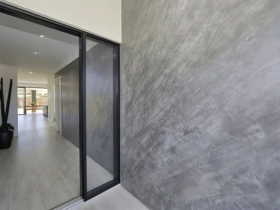The time has come to update the ceiling? You can do it easily and quickly! It is enough to break your work into 5 stages and the ceiling is ready.
Stage 1. Preparation of tools and material.
To process the surface and direct painting of the ceiling, you need a special inventory, which can be purchased at any construction store.
-Sponge for washing dishes
-Putty knife
-Manual emery
-Sandpaper
-Glasses
-Polyacryla roller with a long handle
-Plastic tray for paint
-Main brush
To make the ceiling look worthy, except for the paint, which will be applied to the surface, primary processing is also necessary, which implies the removal of the old layer and putty the purified surface. This will need:
-Dishwashing liquid
-Water
-Universal putty
-Water -dispersive acrylic paint, which will serve as the basis
Stage 2. Cleaning the surface
It is quite difficult to clear the old whitewash, but by applying patience and hard work — this problem will be solved in a few hours. To do this, you need to moisten the ceiling with water, and thoroughly rub the entire surface with a sponge from the dishwashing liquid applied to it. It is best to rub the hard side. If some areas have not succumbed, then they will have to be scored with an iron spatula.
Stage 3. Surface preparation.
When the old whitewash is removed, visible seams, recesses, cracks will appear on the surface. All these irregularities must be removed, otherwise the paint will not fall evenly, and the ceiling will look untidy. In this case, the most faithful assistants, a spatula with putty will be. Only flaws can be covered, but the ceiling will become ideal, only with a complete putty of the surface. After processing the ceiling, the correctional material must be dry and only after the putty completely hardens, you can proceed to the next stage.
Stage 4. Smooth smoothness.
The putty will remove all the large cracks, recesses and ledges, but will not save the ceiling canvas from small subtexts and roughnesses. To remove them, it is necessary to roll the surface with sandpaper and manual sandpaper. It should be understood that when this procedure is performed, a large amount of dust may form, in order to avoid falling into the eyes, you need to put on glasses. On the polished ceiling, the paint will lie down as if clockwork, uneven places will be painted better, and the result will exceed all expectations.
Stage 5. Surface painting
For painting the ceiling, water -dispersive acrylic paint is best suited. Its composition will save the surface from moisture, dust and fading. In addition, this paint is very easy to use, and any person who does not even possess the profession of a malarus can apply it to the ceiling. A small amount of paint must be poured into a plastic tray and stir well, and then roll out onto the tray with a roller and applied to the ceiling surface.
The first layer of paint is overlap, small strokes and rolled out, slightly pressing the roller to the surface. The second layer should be applied after 4-5 hours, when the first layer is completely dry. Now the paint will be applied along the ceiling, rolling out with long strokes.
After the second layer completely dried, the ceiling will become perfectly white, even if for the first time it seemed insufficiently painted for a minute of painting. However, it is worth paying attention to those places where it was difficult to work with a roller. For example, a near -muddy space or a site between a battery pipe and a wall. Such places can be tinted with an ordinary painting brush.
After the work done, the ceiling will be able to delight his master for many years for many years.











Оставить коммент.